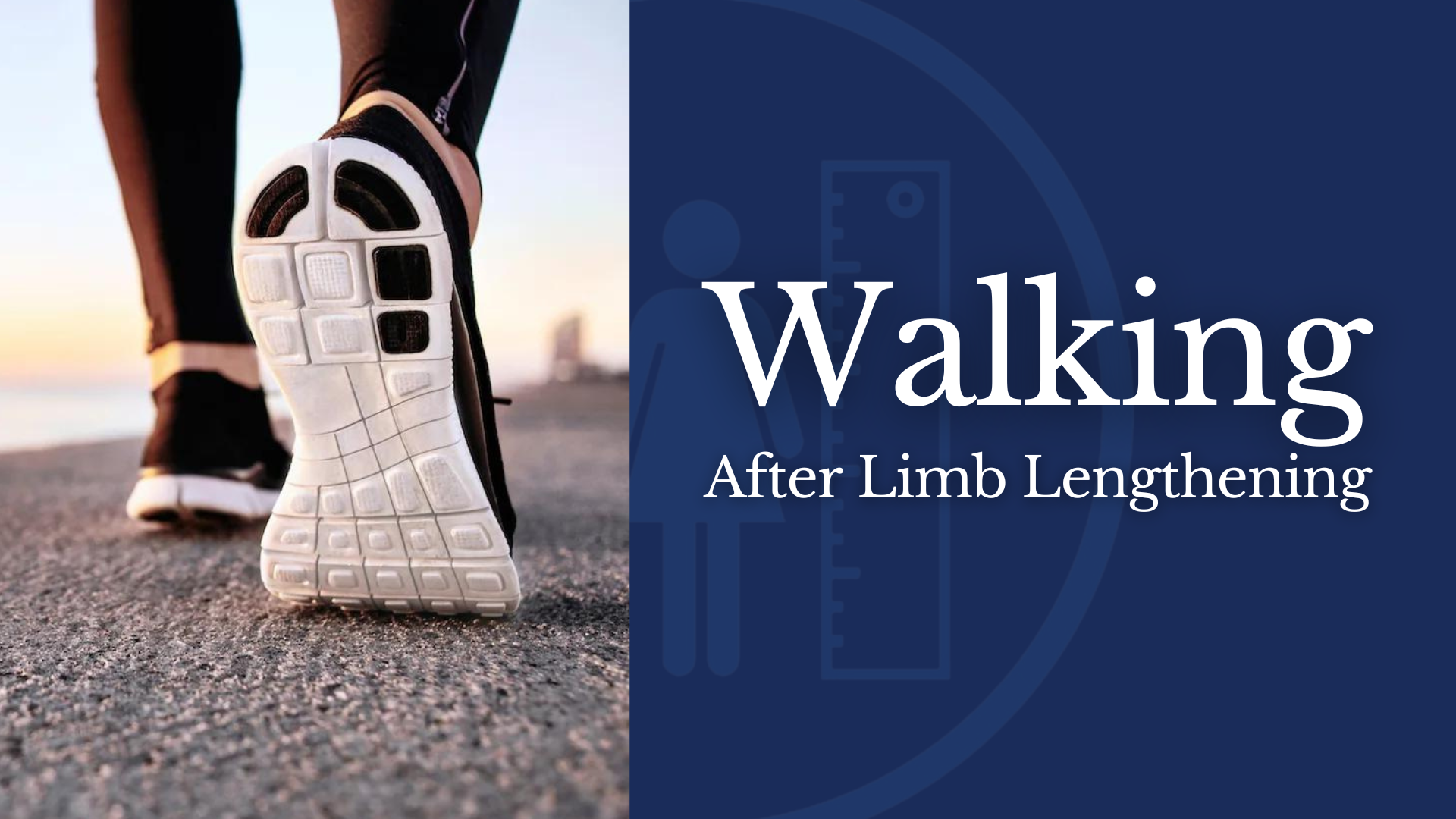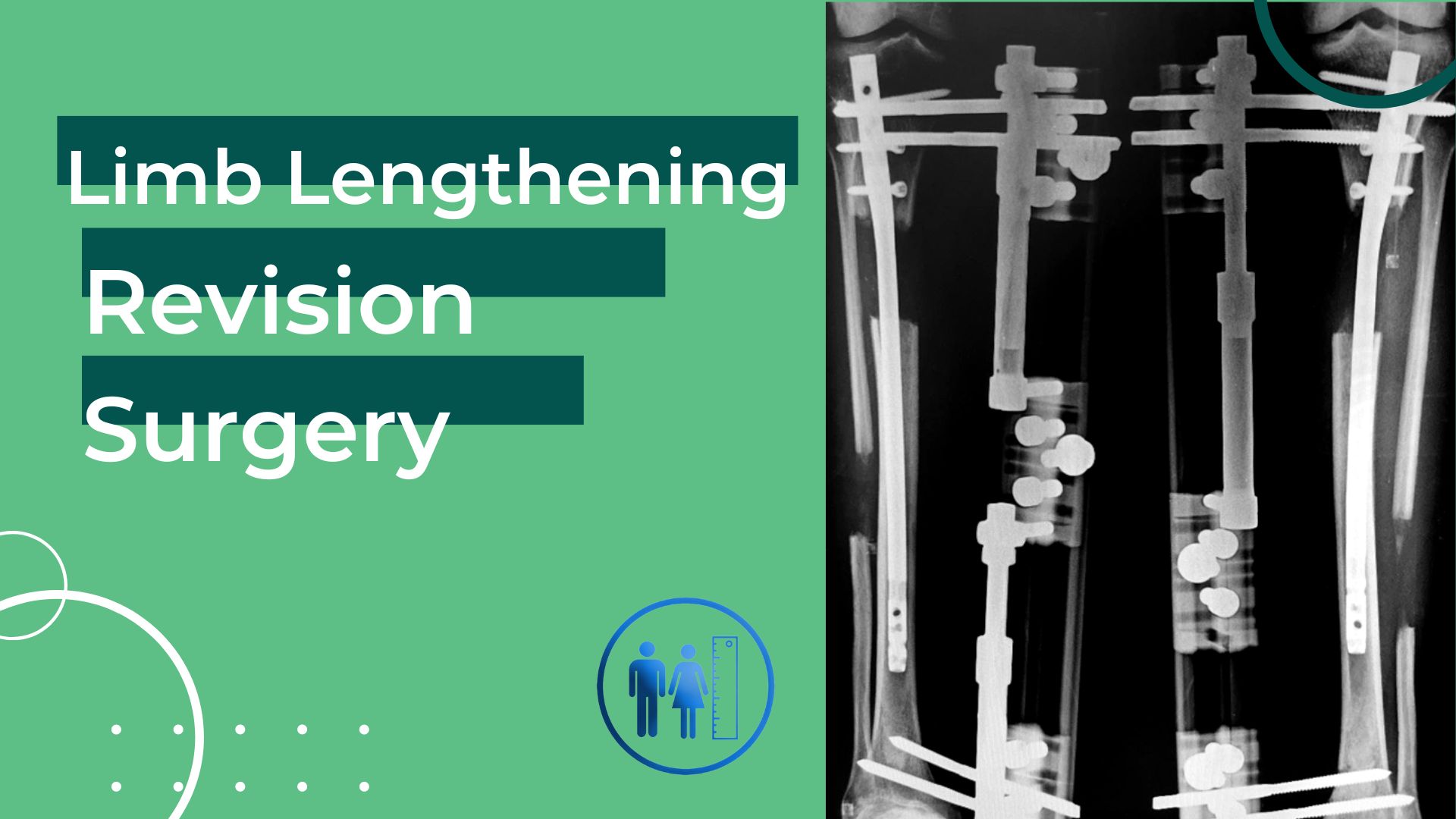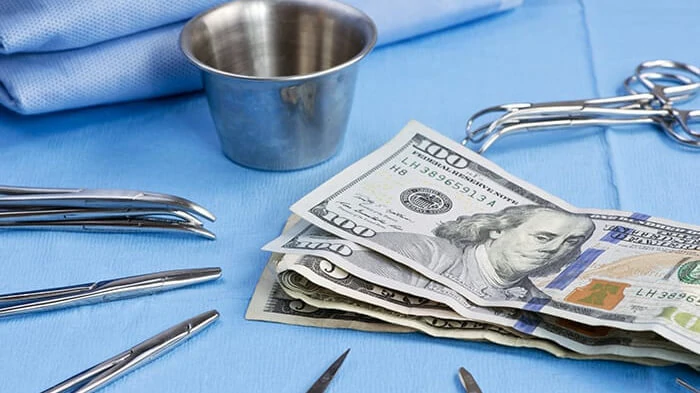
Live
Support AI
Walking After Limb Lengthening Surgery; Advice

When contemplating surgery, it's important to have a thorough understanding of the entire process, including how lengthy and how complex the rehabilitation would be. Recovery of pain from limb lengthening surgery is manageable, and the benefits of the procedure outweigh any drawbacks you might have.
For those considering limb lengthening surgery to become taller, the prospect of walking normally again immediately after the procedure understandably raises some anxiety.
Recovery Process
There will be some discomfort, especially following surgery, as is normal. You can rest assured, though, that our staff will provide you with the necessary pain medicine. Long-distance walking will still necessitate the use of a walker or crutches at first until you regain strength in your legs.
If your doctor prescribes vitamin supplements, be sure to take them as directed. After surgery, your body will need bone-forming nutrients like calcium and vitamin D to repair and rebuild damaged bone. It's recommended that you take the vitamins exactly as directed on the bottle.
Physical therapy and other rehabilitation efforts are crucial to your recovery. Only you can do the job, therefore even if today isn't your best day, you need to keep going. Our physiotherapist has extensive experience helping patients recover from this procedure. We will be there to help you through the entire process of getting better. If you go into physical therapy with a positive frame of mind and are willing to put in the work to rehabilitate your joints, you will feel better quickly.
The initial 7 days
Our doctor will begin walking the patient a few days after the surgery to increase blood circulation and lower the risk of embolism. Your first physical therapy session will begin two days after surgery. The second physical therapy session will be provided on the fourth day following surgery.
Physical therapy sessions will continue at least 5 days a week after discharge and may grow to 5-6-7-8 depending on the patient's condition.
15th day to the end of the 3rd month
Physical therapy is about to start and will play a significant role in your recovery. The postoperative period is spent working with a physical therapist who will help you rehabilitate your range of motion. Following surgery, you should make an effort to increase your range of motion and overcome any knee or joint stiffness.
End of 3rd month
Your doctor and PT will help you adjust to your new normal and will provide you guidance on how to maximize the benefits of your limb lengthening procedure.
The recovery process takes 4-5 months. The time you'll spend recovering from this operation will be minimal compared to the rest of your life, so consider it an investment in your future.
Should I spend all my time in bed?
Many people believe, incorrectly, that they will have to spend weeks or months in bed in order to have their legs surgically lengthened. The reverse is true, in reality. When our patients come in for surgery, we push them to get up and move around the next day, even if it's just to take a few baby steps with a walker. However, most patients can, with the help of their surgeon, medical assistant, or physical therapist, walk short distances while using a walker.
Can I Work Out After Limb Lengthening?
You will have no limits on your upper body, so you may get back to working out as soon as you recover from surgery. Following surgery, you should expect to start physical therapy quickly; your PT can give you advice on what exercises will help you the most at the outset of your recovery. The length of your bones will be altered throughout the procedure. Leg muscles, ligaments, and tendons will all have to adapt to the new bone length, which will take some time.

After limb lengthening surgery, you'll want to get back into shape quickly, so it's important to follow your physical therapist's instructions when exercising. Long-term, after you are all healed you will be able to continue workouts and can even get back to playing competitive sports if you wish.
Can I Run After Limb Lengthening Surgery?
You will be able to resume running approximately 6-8 months following surgery, and you can participate in competitive sports about a year after surgery. Running is a very significant impact on your legs, thus it takes some time before you can run without pain. You need to properly build up the strength in your bones and muscles following surgery before getting back into jogging.

It's important to ease back into running if you decide to start up again. Just because you ran marathons before surgery doesn't imply you can start doing it again. Taking baby steps is the best way to begin. This is significant reconstructive surgery, and it will take some time for your body to acclimatize to the increased length of your limbs. If you notice a change in your stride or gait, consult a physical therapist before engaging in any strenuous running activities that could further stress your joints.
Factors that Affect Running After Surgery
Some things are up to you, while others are out of your hands. You may get back to running by concentrating on your own actions and having faith in the process.
As such, consider the following list of bullet points as you plan your strategy for the extended trip.
- Device or technique for securing something (LON, LATN, STRYDE, PRECICE, etc.)
- Stretched out into longer chunks (femur, tibia, or both)
- Amount increased
- The extent to which muscular atrophy or muscle loss has occurred
- Regularity and intensity of physical therapy
- Distinct personal biological characteristics
Methods and Walking Process

Walking with PRECICE
The distraction phase of the common PRECICE technique prevents you from bearing weight at any time. Because of atrophy, the healing process will be more slower (the degradation of muscle).
In order to go around using PRECICE 2.2, you will need to make use of a wheelchair during the elongation phase and crutches later in the healing phase, but you will not be bedridden.
Three to four months after their initial operation, PRECICE 2.2 patients can begin walking (not during the distraction phase). For the first one to one and a half months, you will need to rely on a walker or wheelchair, but you should be able to progress to walking without aid.
Walking with LON
Like STRYDE, Lengthening Over Nail (LON) employs an intramedullary (internal) nail, but in addition, an external fixator device regulates the nail's lengthening. If you're on a limited budget, LON is a great option because it's less expensive than STRYDE and PRECICE but the bulky external fixator can be uncomfortable.
This progresses at a pace of 1 mm per day and lasts for two to three months. After 2-4 weeks of obvious bone consolidation, the everlasting fixators are taken off and the patient is able to walk more normally. The LON technique is a form of partial load shedding. During the extension, walkers and wheelchairs are used. Regular walks are made for physical rehabilitation purposes during the elongation phase, however, this is obviously limited.
After the elongation procedure is completed, the doctor consults with the bone and removes the device as soon as possible. If the doctor notices a slow union, may recommend supportive treatments like stem cell therapy.
Walking without assistance can start after 2-3 months in both the Precice and LON techniques. The entire recuperation process takes about 4-5 months.
Walking with Ilizarov
After the first 3–4 month consolidation period, the Ilizarov procedure is the slowest of all the methods, requiring 45 days to recover for every 1 cm gain in length. The external fixator must be worn until bone consolidation is complete, which can cause considerable discomfort when walking.
These are only a few examples of the most widely used nails nowadays; the market is rife with different options.
Expert Recommendations for Walking After Limb Lengthening
Poor gait, a limp, or even an anterior pelvic tilt might result from rushing the transition from walkers to crutches to canes (APT). The following guidelines will help you prevent these issues and the subsequent formation of ineffective muscle memory or recruitment patterns:
- Don't skip out on physical therapy sessions; putting it off will leave you stiff, sore, and unsteady on your feet.
- Try to start using a walker right away, but gradually shift your weight off of it until you're able to walk without one.
- Stretch your calf and hamstring muscles, as well as the rest of your lower leg, when you engage in dorsiflexion (lifting your toes upward). You may further strengthen your ability to keep your legs straight by extending your glutes and hip abductors.
- Keep an open mind and optimistic outlook before surgery, but always follow your surgeon's orders. To speed up the healing process and get back on your feet as soon as possible following surgery, it's important to keep up with your regular routine of stretching, exercising, and walking.
For more information please contact us and follow us on
You will be informed about the lengthening increase, lengthening process, the prices of the surgical methods, the difference of the methods, the risks of the surgery.




